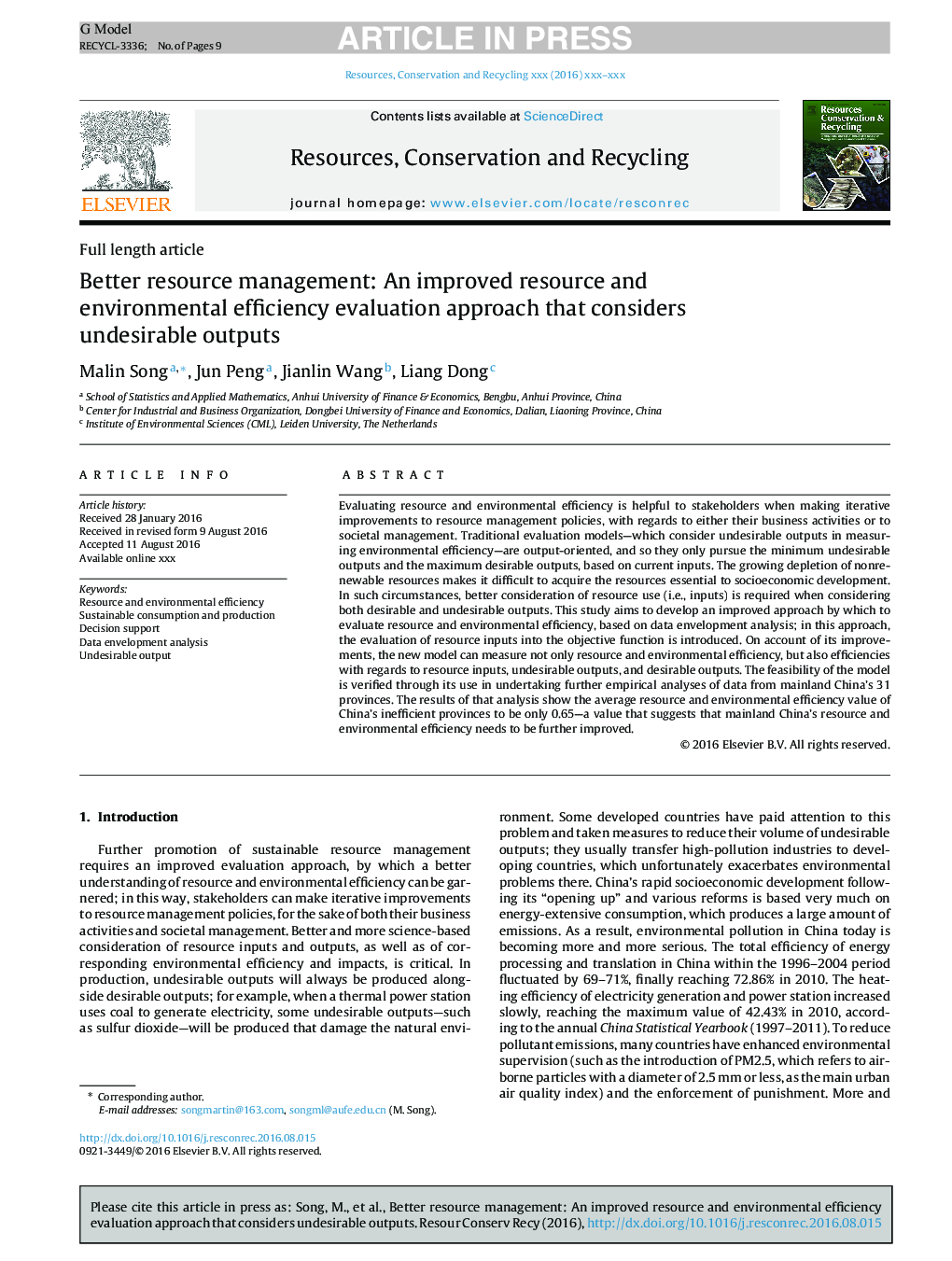| Article ID | Journal | Published Year | Pages | File Type |
|---|---|---|---|---|
| 7494669 | Resources, Conservation and Recycling | 2018 | 9 Pages |
Abstract
Evaluating resource and environmental efficiency is helpful to stakeholders when making iterative improvements to resource management policies, with regards to either their business activities or to societal management. Traditional evaluation models-which consider undesirable outputs in measuring environmental efficiency-are output-oriented, and so they only pursue the minimum undesirable outputs and the maximum desirable outputs, based on current inputs. The growing depletion of nonrenewable resources makes it difficult to acquire the resources essential to socioeconomic development. In such circumstances, better consideration of resource use (i.e., inputs) is required when considering both desirable and undesirable outputs. This study aims to develop an improved approach by which to evaluate resource and environmental efficiency, based on data envelopment analysis; in this approach, the evaluation of resource inputs into the objective function is introduced. On account of its improvements, the new model can measure not only resource and environmental efficiency, but also efficiencies with regards to resource inputs, undesirable outputs, and desirable outputs. The feasibility of the model is verified through its use in undertaking further empirical analyses of data from mainland China's 31 provinces. The results of that analysis show the average resource and environmental efficiency value of China's inefficient provinces to be only 0.65-a value that suggests that mainland China's resource and environmental efficiency needs to be further improved.
Keywords
Related Topics
Physical Sciences and Engineering
Energy
Renewable Energy, Sustainability and the Environment
Authors
Malin Song, Jun Peng, Jianlin Wang, Liang Dong,
